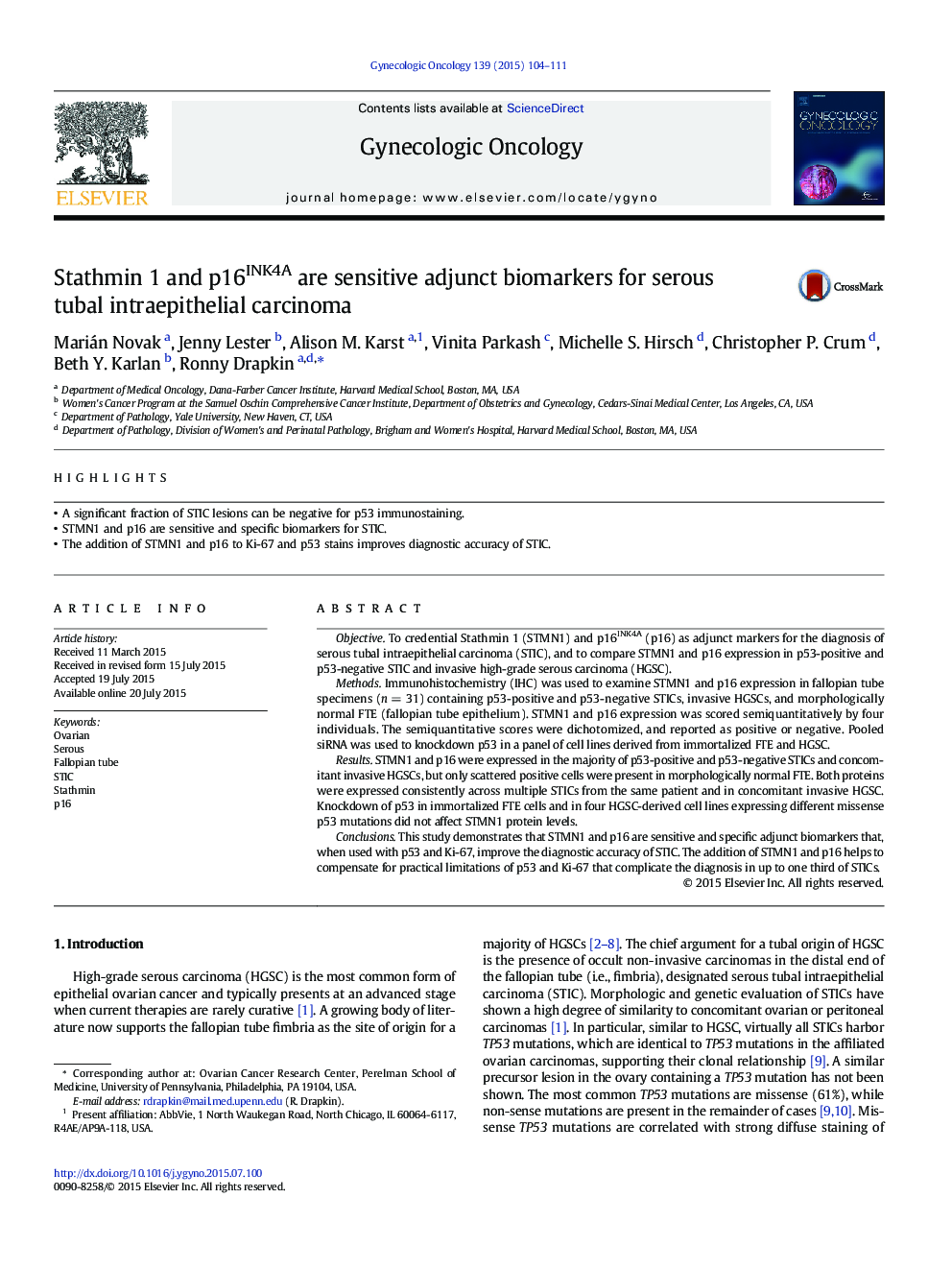| Article ID | Journal | Published Year | Pages | File Type |
|---|---|---|---|---|
| 3942553 | Gynecologic Oncology | 2015 | 8 Pages |
•A significant fraction of STIC lesions can be negative for p53 immunostaining.•STMN1 and p16 are sensitive and specific biomarkers for STIC.•The addition of STMN1 and p16 to Ki-67 and p53 stains improves diagnostic accuracy of STIC.
ObjectiveTo credential Stathmin 1 (STMN1) and p16INK4A (p16) as adjunct markers for the diagnosis of serous tubal intraepithelial carcinoma (STIC), and to compare STMN1 and p16 expression in p53-positive and p53-negative STIC and invasive high-grade serous carcinoma (HGSC).MethodsImmunohistochemistry (IHC) was used to examine STMN1 and p16 expression in fallopian tube specimens (n = 31) containing p53-positive and p53-negative STICs, invasive HGSCs, and morphologically normal FTE (fallopian tube epithelium). STMN1 and p16 expression was scored semiquantitatively by four individuals. The semiquantitative scores were dichotomized, and reported as positive or negative. Pooled siRNA was used to knockdown p53 in a panel of cell lines derived from immortalized FTE and HGSC.ResultsSTMN1 and p16 were expressed in the majority of p53-positive and p53-negative STICs and concomitant invasive HGSCs, but only scattered positive cells were present in morphologically normal FTE. Both proteins were expressed consistently across multiple STICs from the same patient and in concomitant invasive HGSC. Knockdown of p53 in immortalized FTE cells and in four HGSC-derived cell lines expressing different missense p53 mutations did not affect STMN1 protein levels.ConclusionsThis study demonstrates that STMN1 and p16 are sensitive and specific adjunct biomarkers that, when used with p53 and Ki-67, improve the diagnostic accuracy of STIC. The addition of STMN1 and p16 helps to compensate for practical limitations of p53 and Ki-67 that complicate the diagnosis in up to one third of STICs.
